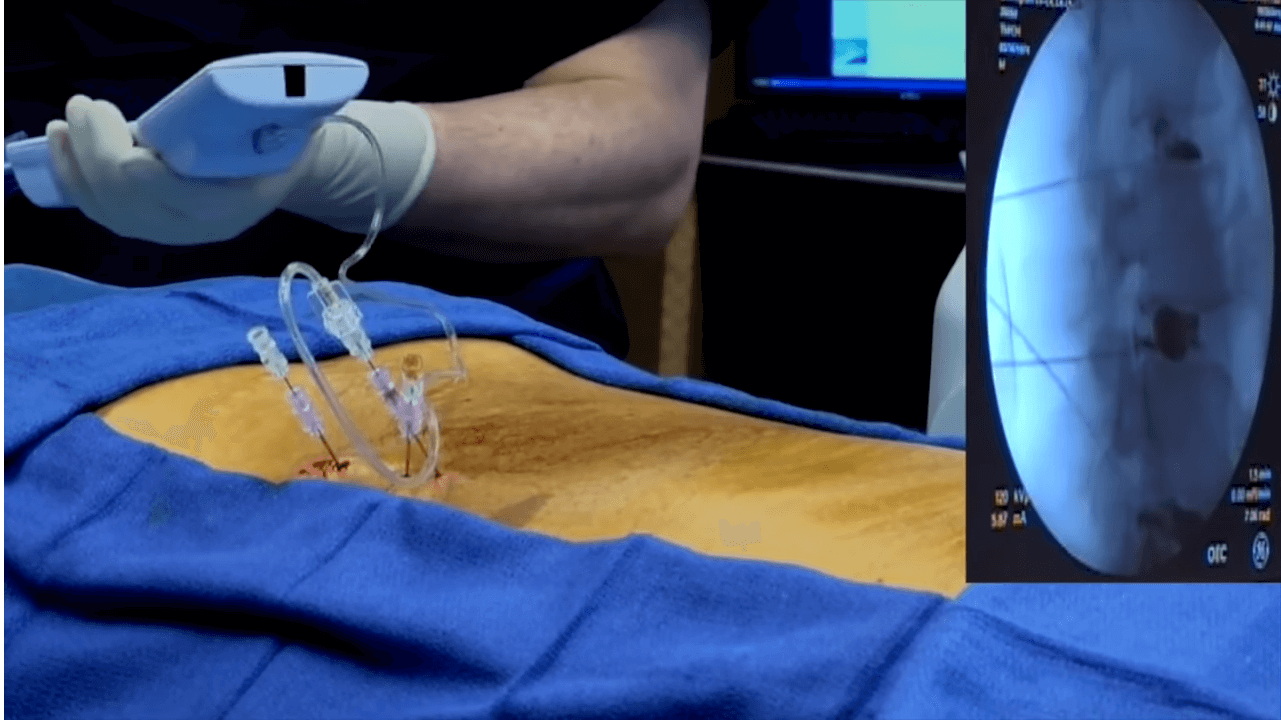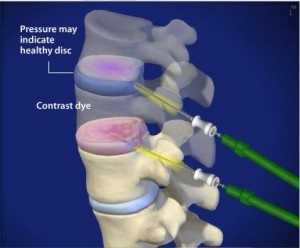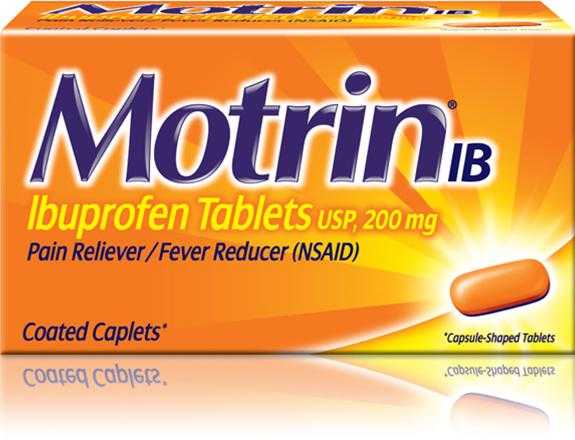Discogram

Description
A Discogram is a test used to determine which disc or discs, if any, are related to your pain. Many people have discs that look abnormal on an MRI, but may not be related to their pain.
Discograms can be performed in the lumbar spine (low back) and cervical spine (neck). The test involves injecting dye that can be seen on x-rays into the centre of the discs. In a normal disc, without degeneration or changes, the dye stays in the centre of the disc. If the disc has torn fibres, the dye spreads into the damaged areas. If the disc is severely degenerated, the dye spreads throughout.

The second function of the test is pain assessment – information about the location and intensity of pain experienced during the injection will help your consultant to determine which discs, if any, are related to the pain you are experiencing. The reason that discograms are useful is that the correlation between degeneration seen on an MRI scan and pain is not an exact one. Discograms are not done in every case and are usually done prior to surgery.
Before the procedure
- Do not eat any solid foods 6 hours prior to your discogram. You may have clear liquids upto 2 hours before your discogram.
- Let the hospital staff know if you are pregnant, or may be pregnant, are diabetic, have a history of epilepsy or seizure, are allergic to any medication or have had any reaction to x-ray dye.
- If you are taking any blood thinners such as warfarin or aspirin, you must stop taking them a week before your discogram procedure. Tell your primary care doctor and your consultant before you stop taking your blood thinners.
- Before the procedure you will have an intravenous (IV) catheter placed in your arm or hand. This IV will provide you with fluid, antibiotics and medication that will make you feel drowsy. Cervical discogram patients will lie on their backs; other discogram patients lie on their stomachs.
During the procedure
- You will receive a local anaesthetic before a small needle is injected into your back. Once the needle is in the correct place, sterile saline (with radiologic dye) will be injected into the area of the disc(s). X-rays will be taken during this period and damaged disc tissues will be visible in these X-rays.
- As the injection is made into each disc, your consultant will ask you questions about the location and intensity of any pain that the injection provokes.
- The procedure takes about 40 minutes
After the procedure
- Once your discogram is complete, you will need to stay still for an additional 30 minutes.
- You should limit your activity for the rest of the day and make sure you have someone to drive you home.
- You can usually resume normal activity the day after your procedure.
- The discogram can cause a flare up of your normal back pain for a few days. Take your normal painkillers.
- You will have a follow up appointment after the discogram to discuss the findings.
- There is a 1% risk of infection which we minimize by giving you some antibiotics





